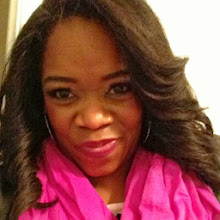We started our pumpkin fun with a CAN, ARE, HAVE graphic organizer. The students and I brainstormed various attributes of a pumpkin. As the students dictated their answers, I modeled how to spell familiar words with letter-sound matches. We worked as a collaborative team. I yelled out the sounds, and the students provided the corresponding letter.
As the students threw out their ideas, I jotted them down on an anchor chart.
The following day we initiated our PUMPKIN INVESTIGATION! Our pumpkin investigation covered many student goals and objectives. For example, measuring the pumpkin provided the students the opportunity to demonstrate an understanding of how to represent
and apply measurement concepts by using nonstandard units to estimate and measure the length of an
object.
In addition, the students were asked to identify vocabulary associated with measurement comparisons ( long/short, small/medium/large, heavy/light) for length and weight.
To kick off the investigation, we assessed the size of our pumpkin. After much debate, and taking a vote, we reluctantly came to the conclusion that our pumpkin is large.
To document our investigation, the students used the form pictured above as I scribbled the information on my Pumpkin Investigation anchor chart.
Next we determined the height. Using unifix cubes, we discovered our pumpkin sits 15 cubes high.
After measuring the pumpkin we employed the use of scientific inquiry to describe the outside of the pumpkin. When using our scientific inquiry skills, instructional targets included the following:
- Observe and ask questions about the pumpkin
- Make simple observations and participate in simple investigations
- Use senses to learn about the pumpkin
- Use simple tools to gather data
- Communicate with others about observations and investigations
- orange
- stem
- lines- Our pumpkin had 32 lines (give or take...)
The last task on Day 1 of our investigation involved estimating the number of seeds inside the pumpkin. Guesses ranged from 20 to 100. And let me tell you, those estimates were way off the mark.
The pumpkin fun continued as we voted on how to carve our pumpkin. I first saw this idea on the First Grade Parade blog. This voting activity rolls around at the perfect time...during election season! The voting opportunity allows the students to recognize voting as a means of selecting leaders or ending conflicts. So for student with a social studies goal/objective in government/civics, voting offers the chance for the student to demonstrate how to assess options and then vote to make a classroom decision.
There were millions of seeds inside the pumpkin. To make counting the seeds manageable, we made groups of 10 with the seeds.
Day 2 of our pumpkin investigation commenced with more scientific inquiry. The students actively participated in the scientific process to discover if our pumpkin would sink or float. Before the experiment, the students were asked to predict what the pumpkin would do. 7 out of 8 students predicted the pumpkin would sink.
We have a floater!
The pumpkin fun continued as we voted on how to carve our pumpkin. I first saw this idea on the First Grade Parade blog. This voting activity rolls around at the perfect time...during election season! The voting opportunity allows the students to recognize voting as a means of selecting leaders or ending conflicts. So for student with a social studies goal/objective in government/civics, voting offers the chance for the student to demonstrate how to assess options and then vote to make a classroom decision.
And the winner is...STAY TUNED!
After we voted, we began the carving process. The carving process covered a wealth of math goals/and objectives. For example, the students demonstrated an
understanding of how to represent and manipulate numbers and
expressions when counting the seeds inside the pumpkin. More specifically, the students skip counted 10s to a given number (#pumpkin seeds). In addition, the students compared numbers to determine more, less or
equal.
We counted 510 seeds!!I am more than sure our numbers were off. Counting those piles of seeds proved daunting. Next year, our piles will be created in a more organized fashion. You live and you learn.
So, for the moment you've all been waiting for...
How did we carve our pumpkin?
And the winner is...
It never fails...ANGRY EYES wins every year!
How did we light our pumpkin? Glad you asked. We used a cell phone flashlight. Oh course...we put the cell phone in a plastic bag FIRST!
Pumpkin carving covered the following goals/objectives:
Identify and describe shapes.
- Identify basic shapes by name (square, circle, triangle, rectangle, etc.) and describe attributes (number of sides, size, etc.).
- Describe positions of the shapes on the jack-o-lantern with positional vocabulary (in, on, under, beside, etc.).
- Define two-dimensional shapes as being flat and three-dimensional shapes as being solid.
- Compare two-dimensional shapes and describe their similarities and differences
An off course, no pumpkin adventure is complete without the toasting of the pumpkin seeds. This was our first year toasting. Although they were pretty toasty, the kids ate them.




















No comments:
Post a Comment